If you’re looking for a little bit of greenery in your life but don’t have the time to take care of high-maintenance plants, these five plants are perfect for you.
The best things in life are worth waiting for.
Slow Growing Plants
It can be difficult to find the right plants for your home. You want something that will look nice, but you don’t want to spend a lot of time caring for it. Slow-growing plants are a great option to add some greenery to your home. They don’t need a lot of care and they can thrive in a variety of environments. These plants grow at a much slower rate than most, so they’ll stay small and won’t need as much attention.
You can choose the perfect one for you by considering your preferences.
- Aloe Vera: It grows slowly, and doesn’t need much attention.
- Cactus: It requires less water and survives in harsh conditions.
- Snake Plant: It does not need a lot of light.
- Succulents: They can tolerate low water conditions.
- Bonsai tree: It grows slowly, so don’t need as much care as fast-growing plants.
These plants are perfect for busy people or those who don’t have a lot of space. They’re also great for beginners since they’re very low maintenance.
The Top 10 Slow-growing Plants For Your Home
A slow-growing plant is a great choice for someone who wants a low-maintenance plant that will last for years.
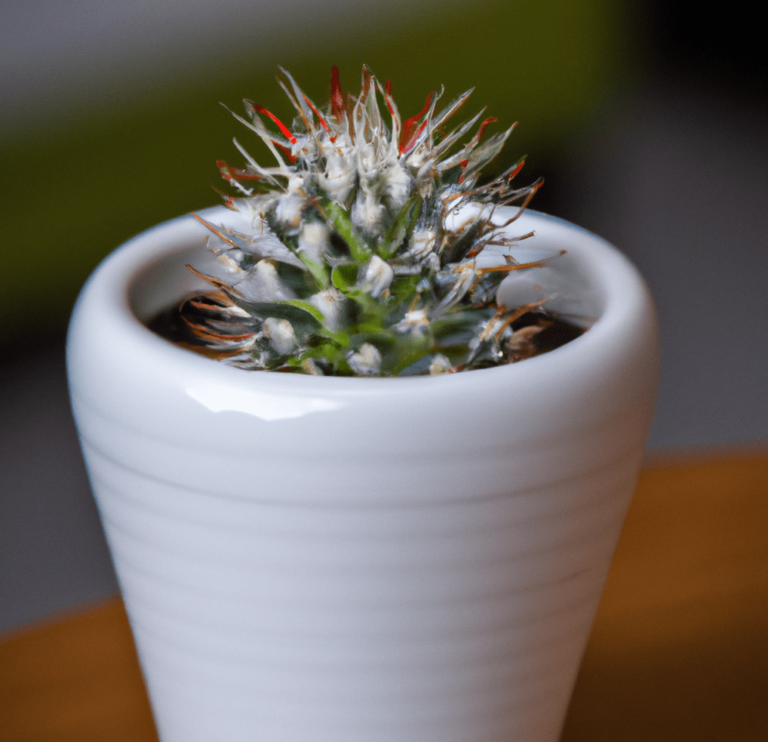
Here are the top 10 slow-growing plants for your home, each plant has its unique advantages:
- Aloe vera
- Snake plant
- Bamboo
- Cactus
- Ficus tree
- Rubber tree
- Dracaena
- Philodendron
- Peace lily
- Spider plant
The Benefits Of Having Slow-growing Plants In Your Home
Slow-growing plants have many benefits in the home:
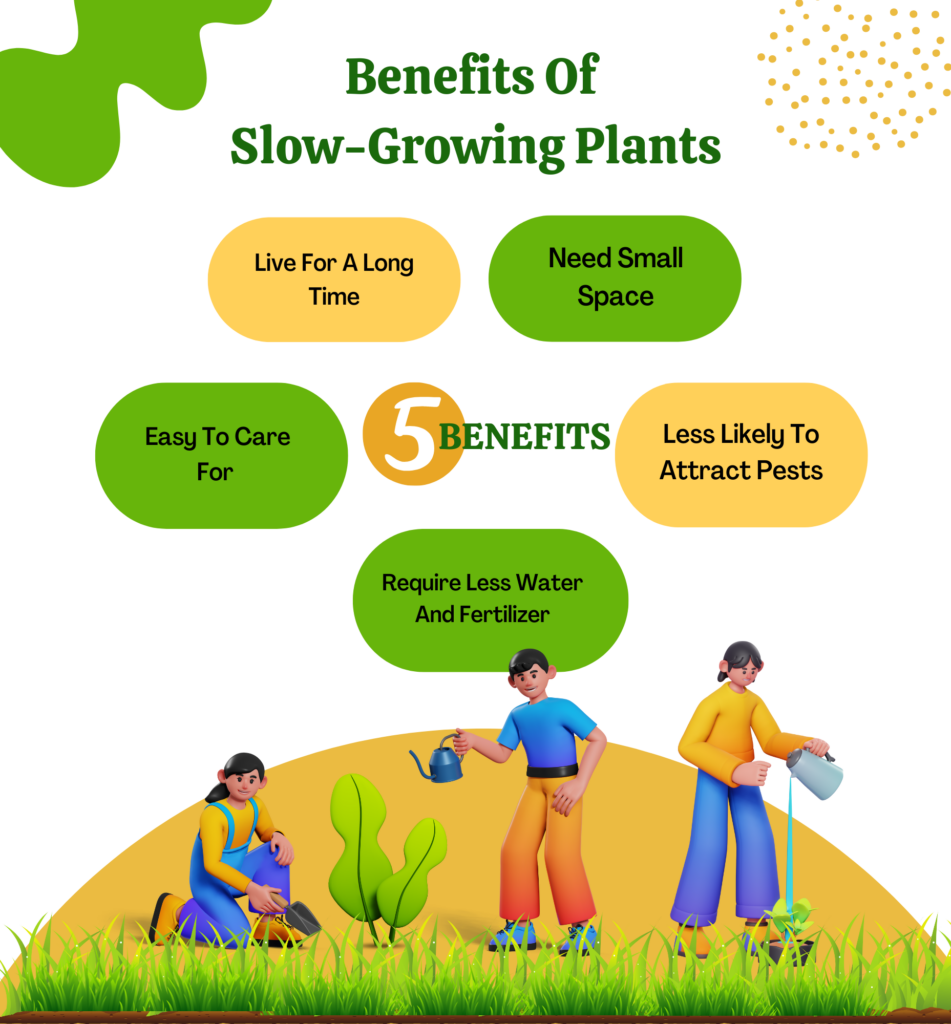
- They can also be a good choice if you don’t have a lot of space, since they won’t get too big too quickly.
- Slow-growing plants are easy to care for.
- They require less water and fertilizer than fast-growing plants.
- They also produce fewer flowers and fruits, so they are less likely to attract pests.
- Slow-growing plants can also live a long time, so you won’t have to replace them as often as you would with a fast-growing plant.
10 Reasons To Start Growing Slow-growing Plants
- Slow-growing plants are great for beginners.
- They are low-maintenance and can tolerate neglect.
- Slow-growing plants can live for a long time.
- They are often more drought-tolerant than fast-growing plants.
- Slow-growing plants can be just as beautiful as fast-growing plants.
- They can help to create a sense of tranquility.
- Slow-growing plants can be used to create privacy screens or hedges.
- They can help to purify the air.
- They can provide food and shelter for wildlife.
- Slow-growing plants are great for people who want to take their time and enjoy the gardening process.
How to Choose The Best Slow-growing Plants For Your Home
When choosing a slow-growing plant for your home, there are a few things to keep in mind.
1. Consider The Amount Of Light
Consider the amount of light the plant will need. Some plants do best in full sun, while others prefer shady areas.
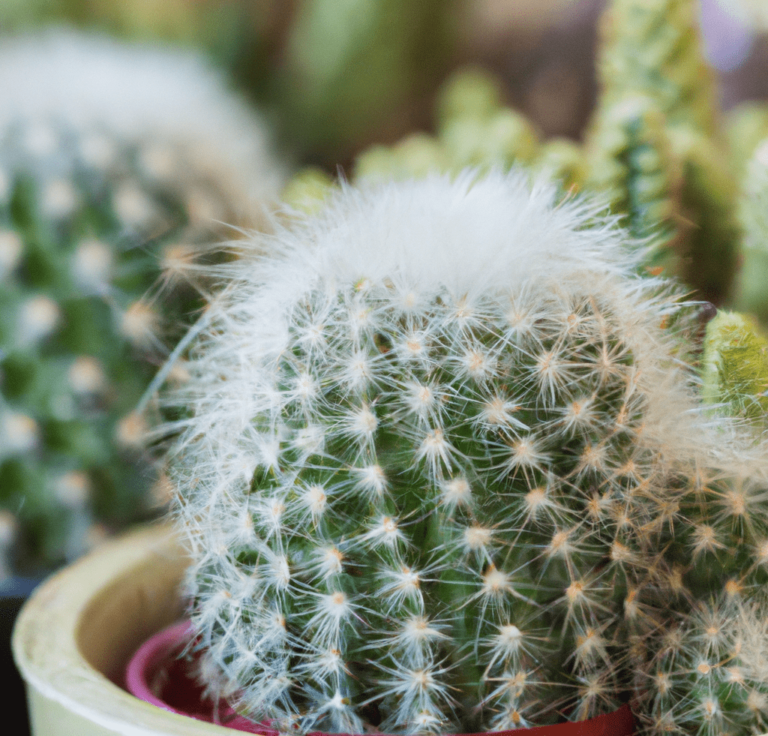
2. Plant’s Size
Think about the plant’s size. You don’t want something that will quickly outgrow its space. Slow-growing plants come in all shapes and sizes, so you’re sure to find one that’s perfect for your home.

3. Consider Climate
Some plants do better in warm climates, while others prefer cooler temperatures. By choosing a plant that’s well-suited to your climate, you’ll increase its chances of thriving.
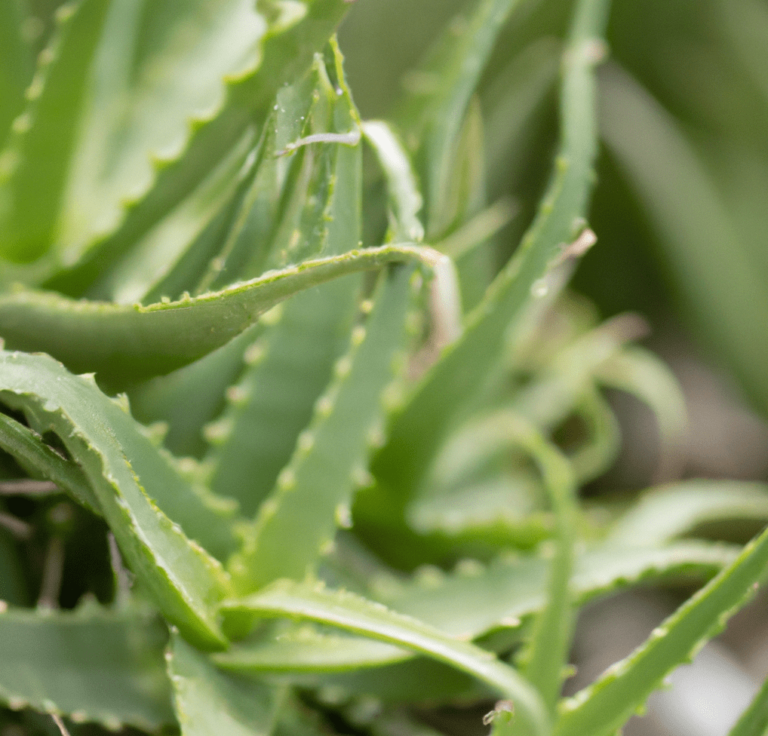
With these factors in mind, you’re ready to choose the perfect slow-growing plant for your home.
The Best Places To Buy Slow-growing Plants
When buying slow-growing plants, it’s important to consider your climate and growing conditions. Make sure to choose plants that will be able to thrive in your area. Also, be sure to read the plant labels carefully so that you know how much care the plant will need.
There are many places where you can buy slow-growing plants. Some of the best places include nurseries, garden centers, and online retailers.
1. Nurseries
Nurseries are a great place to buy slow-growing plants because they typically have a wide selection.
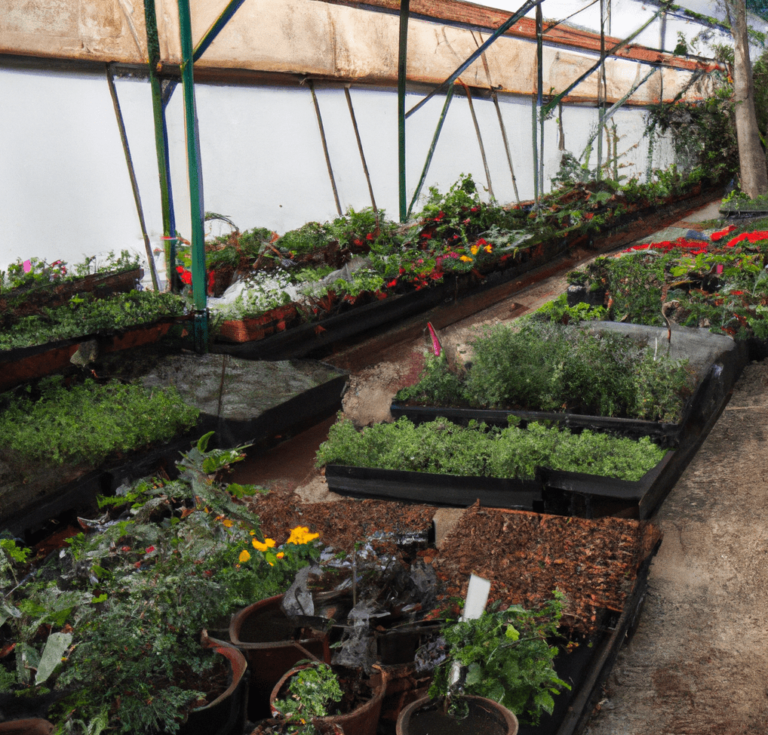
2. Garden Centers
Garden centers also usually have a good selection, and they may have staff who can give you advice on care and maintenance.
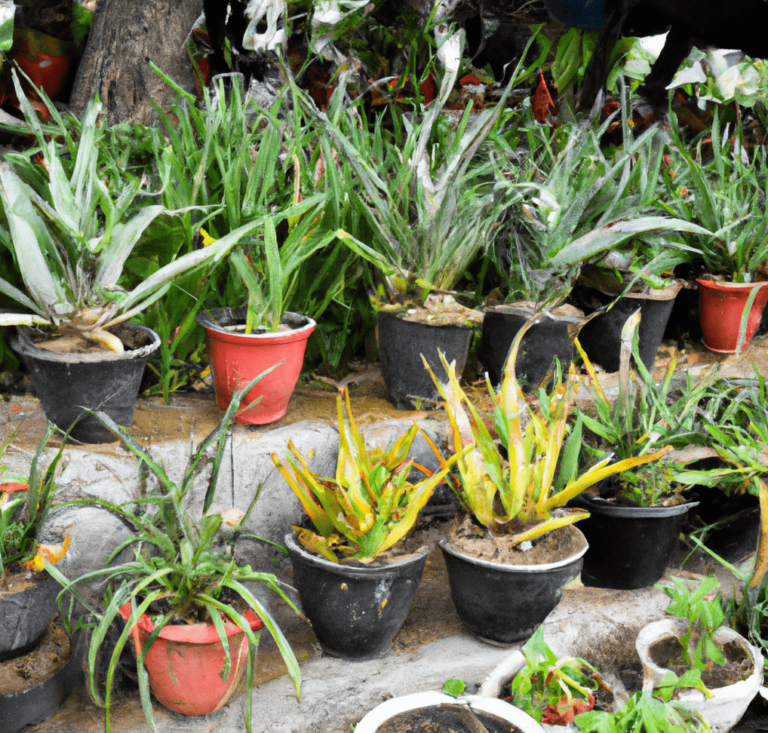
3. Online Retailers
Online retailers can be a good option if you know exactly what you’re looking for.
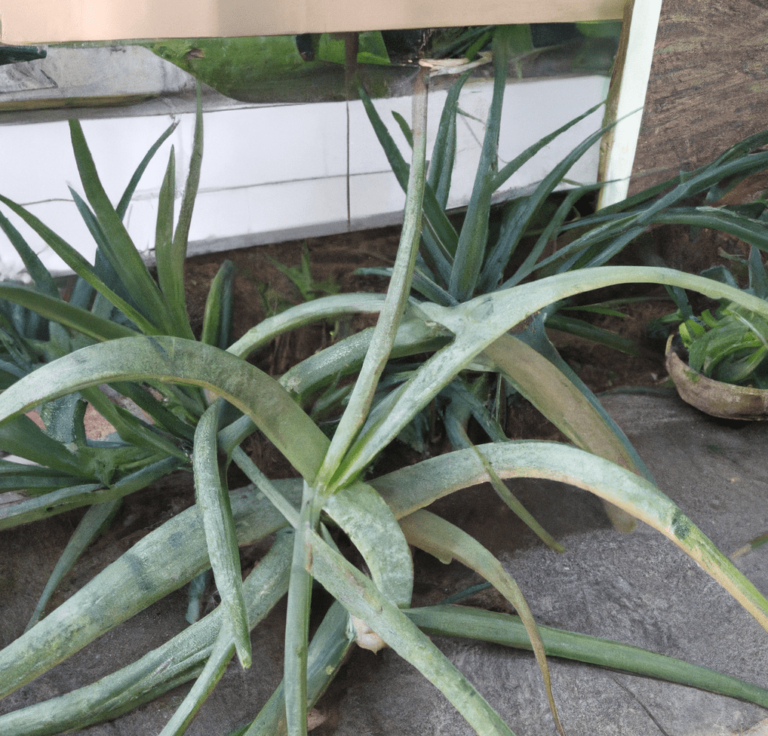
Slow-growing plants can make a great addition to any garden. With a little research, you can find the perfect plants for your space.
How To Care For Slow-growing Plants
If you’re patient enough to wait for a slow-growing plant to mature, then you’re probably the kind of person who will take good care of it. Here are a few tips on how to care for your slow-growing plant:
1. Water
Slow-growing plants often have shallow root systems, so they need more frequent watering than fast-growing plants. Watering deeply encourages roots to grow deeper, making the plant more drought-tolerant.
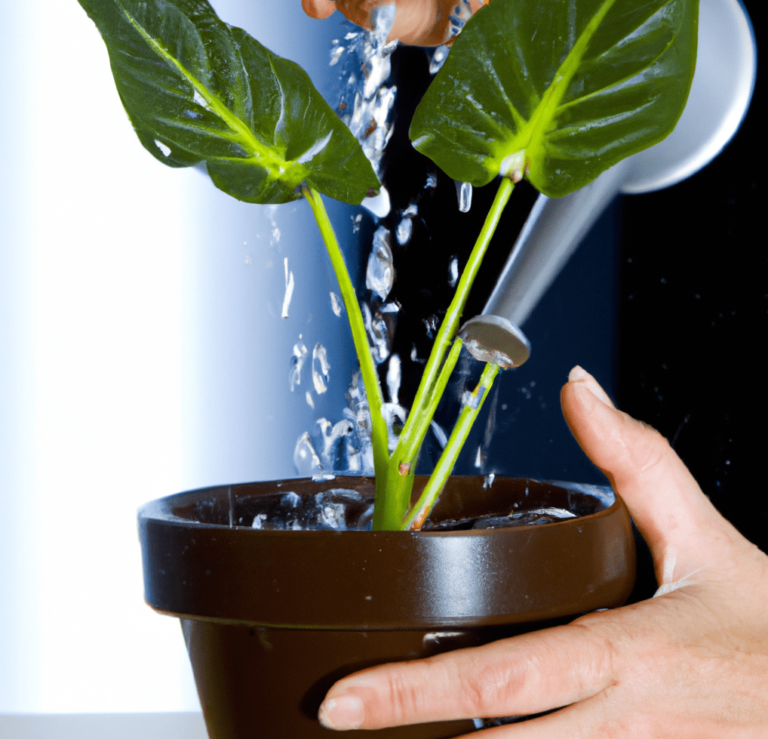
2. Organic Mulch
This will help to retain moisture and keep the roots cool.
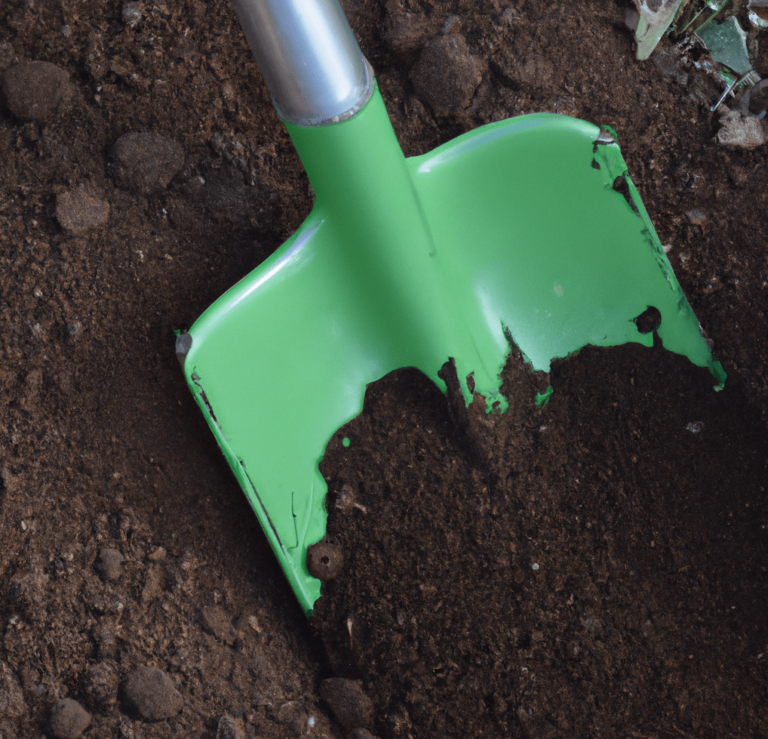
3. Fertilizer
Slow-growing plants often have trouble taking up nutrients from the soil, so regular fertilizing is important. Use an organic fertilizer, such as compost or manure, and apply it according to the package directions.

4. Pruning
Slow-growing plants can be easily over-pruned, so be careful not to remove too much. When pruning, focus on removing dead, diseased, or damaged growth.
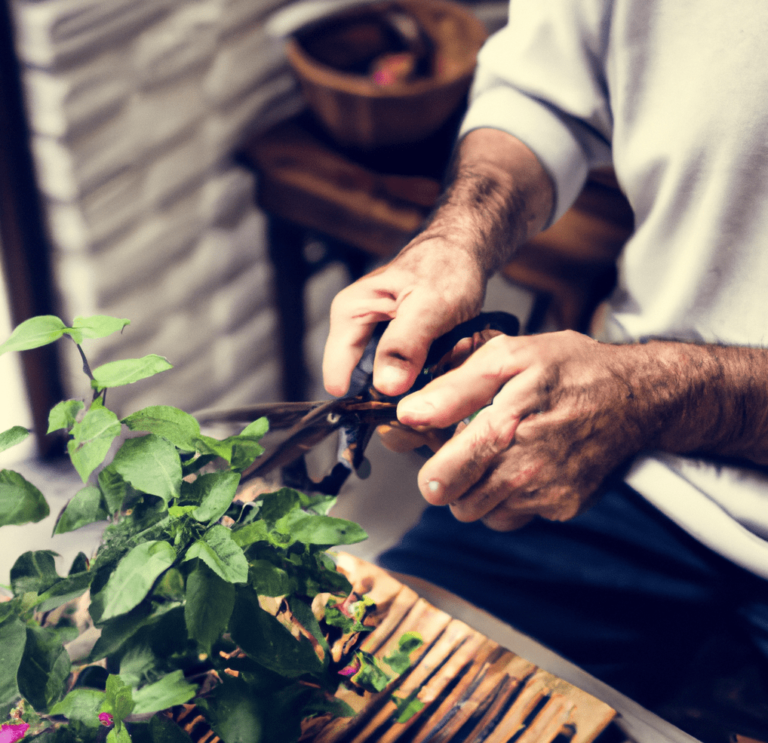
The Difference Between Slow-growing Plants Vs. Fast-growing Plants
1. Slow-growing Plants
Slow-growing plants have many benefits over fast-growing plants. They are typically hardier and require less maintenance. They also tend to live longer and are better able to withstand drought and other environmental stresses.
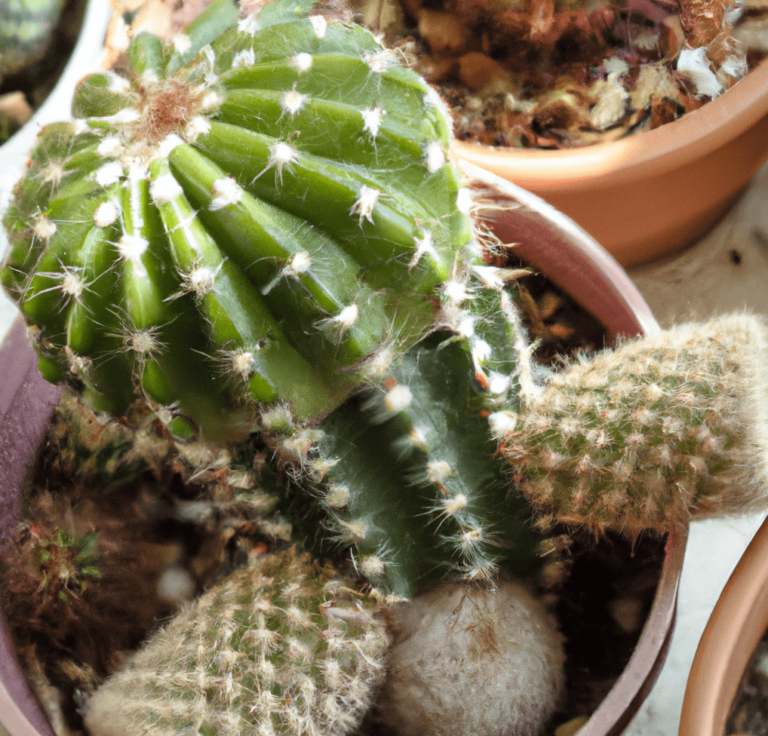
2. Fast-growing Plants
Fast-growing plants are often more vigorous and produce more flowers, fruits, and vegetables. They also mature more quickly, which can be helpful if you are trying to fill a garden space quickly.
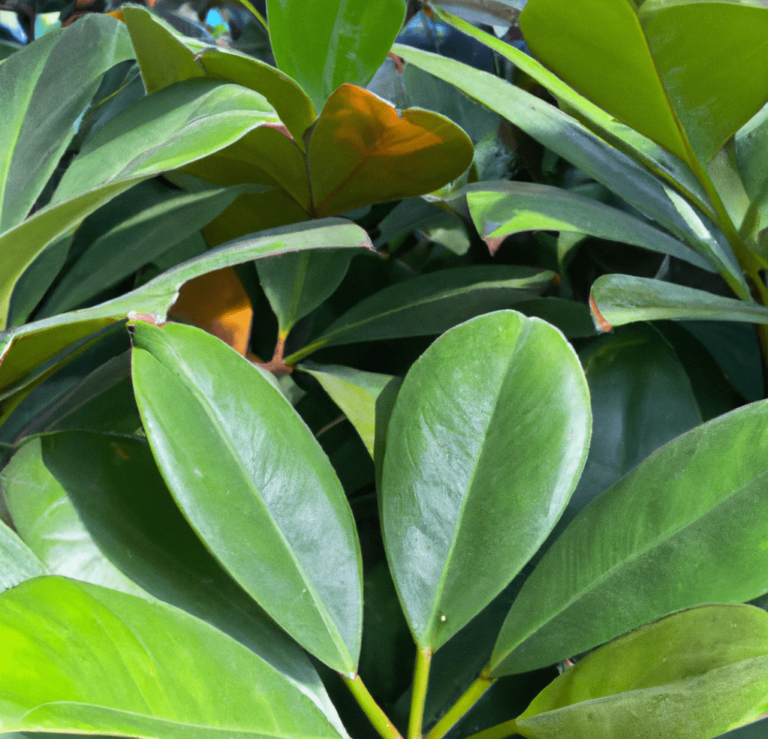
So which type of plant is best for you? It depends on your needs and preferences. If you want a plant that will thrive with minimal care, a slow-growing plant is a good choice. If you need a plant that will fill a space quickly, a fast-growing plant may be a better option.
Tips To Grow Your Slow-growing Plants
If you have slow-growing plants in your garden, don’t despair! With a little bit of extra care, you can make the most of them. Here are some tips:
- Slow-growing plants often have trouble getting enough light, so make sure to put them in a spot where they will get plenty of sunlight.
- Slow-growing plants are often very sensitive to drought, so make sure to water them properly.
- These plants often need a little extra help to get the nutrients they need, so fertilize them properly.
- Be patient. This is probably the most important tip of all. Slow-growing plants can take a long time to mature, so don’t get discouraged if it doesn’t seem to be growing as fast as you’d like. Just keep taking good care of it and it will eventually reach its full potential.
By following these tips, you can make the most of your slow-growing plants and enjoy a beautiful, healthy garden.
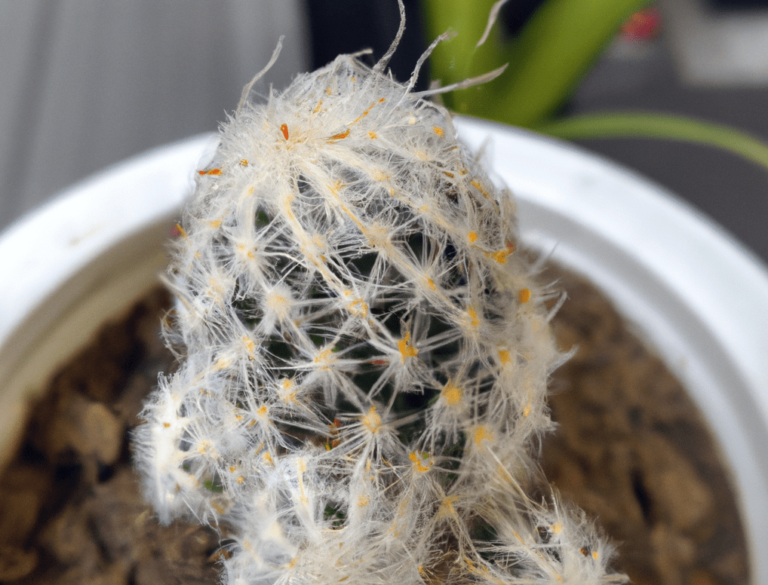
Expert Ideas
- Hang slow-growing plants from the ceiling to create a living room jungle.
- Place slow-growing plants on high shelves, thereby creating an indoor treehouse effect.
- Additionally, group slow-growing plants together to create a serene and meditative space.
- Moreover, use slow-growing plants as unique and interesting centerpieces for your dining room table.
- Finally, get creative and paint pots or planters for your slow-growing plants to add a pop of color.
Bonus Tip
One of the best things you can do for slow-growing plants is to ensure they receive plenty of light. Since slow-growing plants are often understory plants that don’t get much light in their natural habitat, providing them with bright, indirect light will allow them to thrive. Consequently, they will grow stronger and healthier in your home.
Frequently Asked Questions
1: What are slow-growing plants?
Slow-growing plants are plants that have a slower growth rate compared to others. They typically require less care and attention, which makes them perfect for low-maintenance environments. As a result, these plants grow at a slower pace and stay smaller for longer periods.
2: Why should I choose slow-growing plants for my home?
Slow-growing plants are ideal for those who prefer low-maintenance greenery. In addition, they require less water, fertilizer, and pruning, which makes them perfect for beginners or people with busy schedules. As a result, they are an excellent choice for anyone looking for easy-to-care-for plants. Additionally, they don’t take up much space, so they’re ideal for small areas.
3: How do I care for slow-growing plants?
To care for slow-growing plants, make sure they get the right amount of light (bright, indirect light works best for most), water them moderately (only when the soil is dry), and use well-draining soil. Fertilize them sparingly, as they don’t need much feeding due to their slow growth.
4: Can slow-growing plants thrive in low light?
Yes, many slow-growing plants, like the Snake Plant or ZZ Plant, can thrive in low light conditions. However, they do grow best when placed in indirect light. They are more tolerant of low light than fast-growing plants, making them perfect for dimly lit spaces.
5: How long does it take for a slow-growing plant to mature?
The time it takes for a slow-growing plant to mature depends on the type of plant. Typically, it can take several years for slow-growing plants to reach their full size, but they require less maintenance and attention during this time.
Conclusion
If you’re looking for a plant that will grow slowly but surely, there are a few options to choose from. The ten plants listed in this blog post are all great choices, and they will undoubtedly provide you with long-term growth. Moreover, with a little patience and care, you’ll soon have a beautiful, thriving plant in no time.
Michelle Wilde
Related posts
5 Comments
Leave a Reply Cancel reply
![]()
About Michelle Wilde
Michelle Wilde is a stay-at-home mom and avid plant lover. Armed with a post-graduate degree in Computer Science (no kidding!), she loves researching plants and landscapes. When she is not caring for her 4 kids, she spends time on her passion for plants. She blogs at www.indoorplantschannel.com, the trusted source for indoor plants.
Learn more
Subscribe
* You will receive the latest posts and updates about indoor plants!
Search
Recent Posts
Categories
- Beginner Guides (10)
- FAQ (206)
- General (2)
- How-To Guides (212)
- Indoor Plants (214)
- Pest Management (2)
- Plant Problem Solutions (4)
- Seasonal Growing (2)
- Specialized Environments (2)
- Specific Plant Care (3)
- Technical Growing (2)
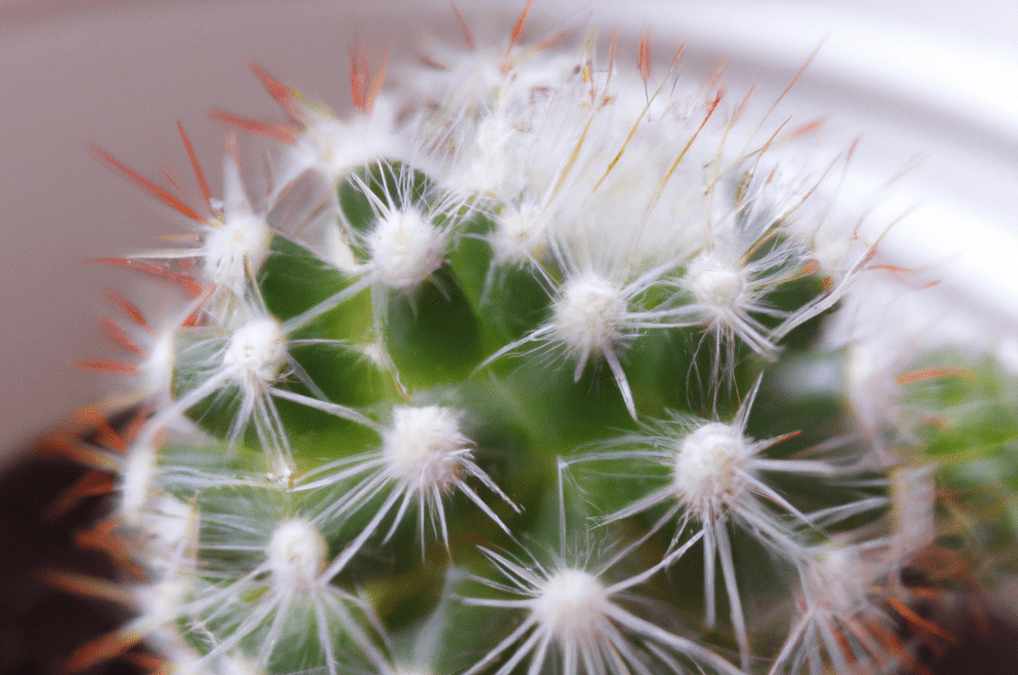
[…] 12 hours ago 9 min read […]
[…] you want to learn how to grow slow plants, this blog post is for you. We’ll teach you everything you need to know, from the best soil to use […]
[…] there are two different types of growth rates: slow and fast. Both have their own benefits, but slow-growing plants have some distinct […]
[…] are a few things to consider when choosing slow-growing plants for your […]
[…] grow indoors. It is very tolerant of low light and can survive in complete darkness. It is a very slow-growing plant, so it does not need a lot of care or […]